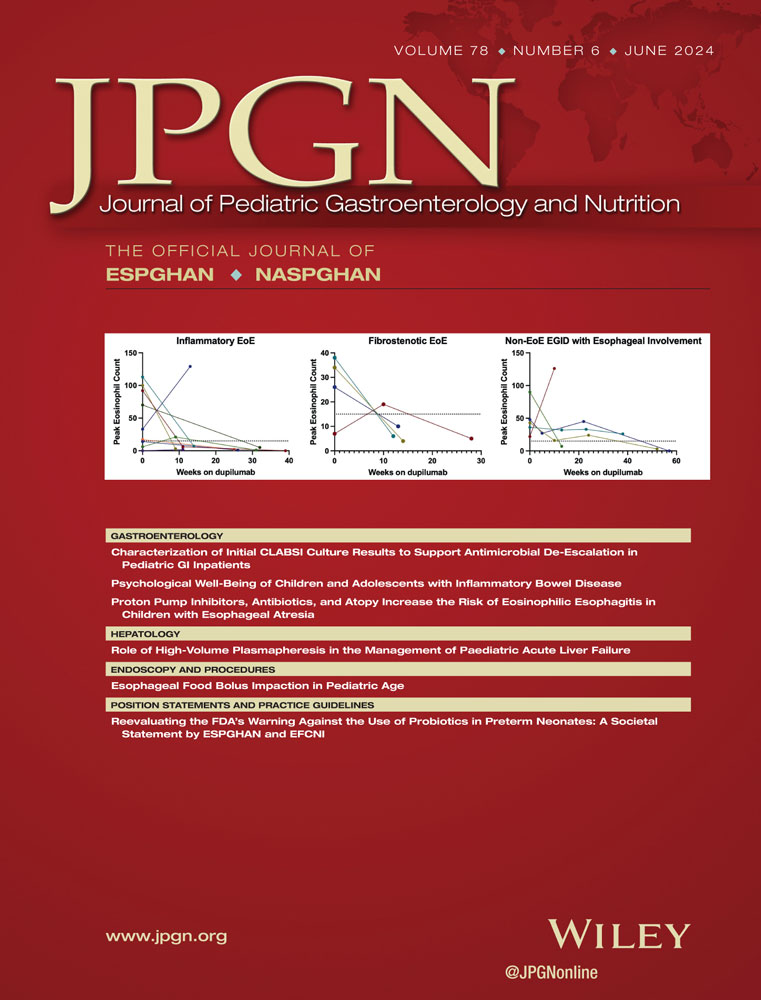Dupilumab in adolescent eosinophilic esophagitis: Experience with fibrostenosis and eosinophilic gastrointestinal disease with esophageal involvement
Diana G. Lerner and Ankur Chugh contributed equally to this study.
Abstract
We evaluated patients aged 12–20 on dupilumab 300 mg weekly for treatment of eosinophilic esophagitis (EoE) who had ≥1 follow-up endoscopy at a tertiary care pediatric hospital (n = 18). Fifty percent had inflammatory EoE (n = 9), 22% had fibrostenotic EoE (n = 4), and 28% had non-EoE eosinophilic gastrointestinal disease (EGID) with esophageal involvement (n = 5). Ninety-four percent discontinued topical corticosteroids (TCS) 2–4 weeks after starting dupilumab. Eighty-nine percent of inflammatory EoE patients had histological response (<15 eosinophils/high-powered field) after an average of 19.1 weeks. One hundred percent of patients with fibrostenotic disease exhibited histological response after 16.8 weeks. Of patients with non-EoE EGID, 60% achieved esophageal histological response after an average of 40.1 weeks. In a small cohort, dupilumab was very effective for adolescent inflammatory and fibrostenotic EoE despite rapid weaning of TCS. Dupilumab was also somewhat effective for non-EoE EGID with esophageal involvement; however, a longer duration of therapy was required.
CONFLICTS OF INTEREST STATEMENT
Mariah Rigsby is a part of Speaker's Bureau at Sanofi/Regeneron. Diana G. Lerner is an Advisory Board member at Sanofi and a consultant at EndoEvo. Ankur Chugh is part of Speaker's Bureau at Sanofi/Regeneron and an Advisory Board at Sanofi/Regeneron. The remaining authors declare no conflict of interest.




